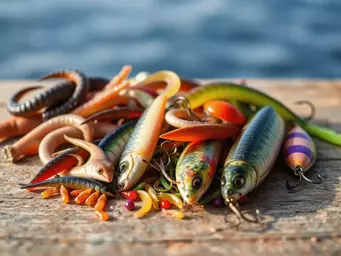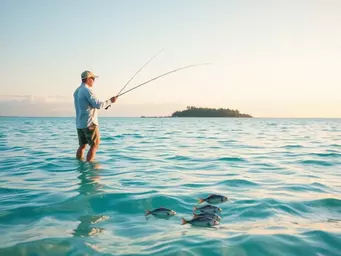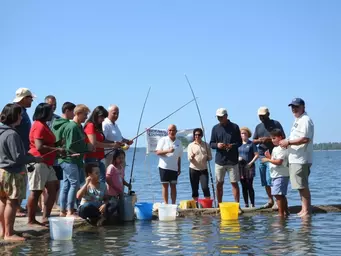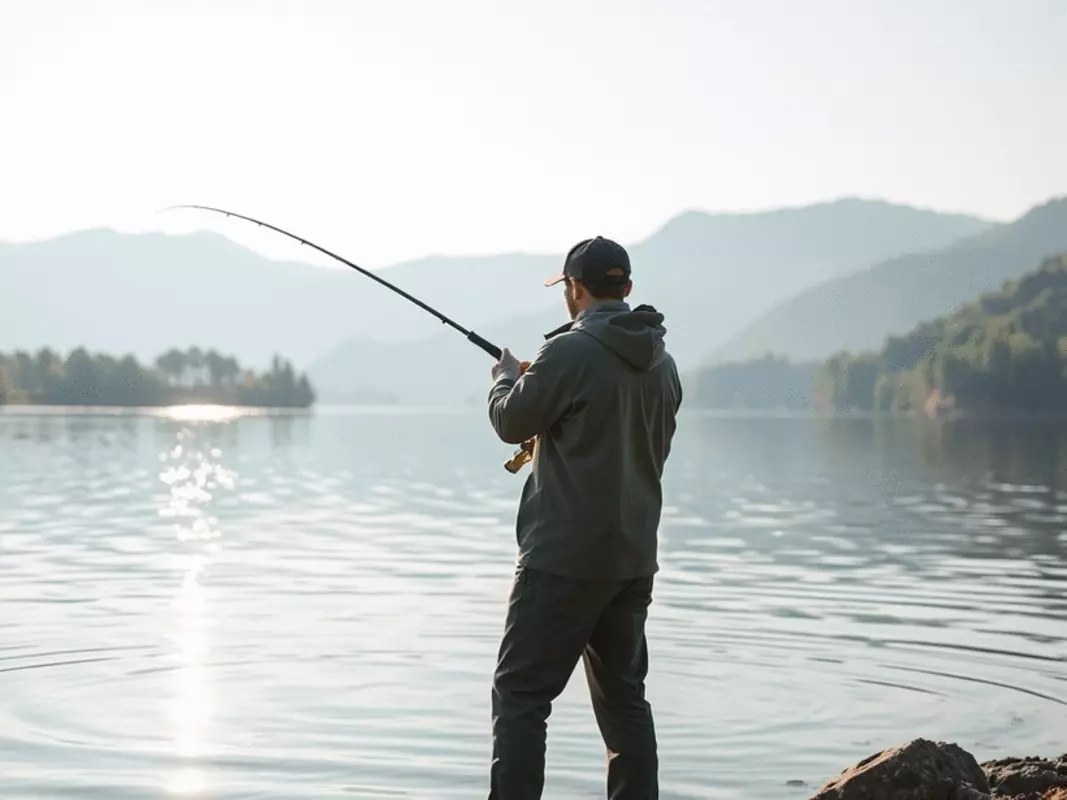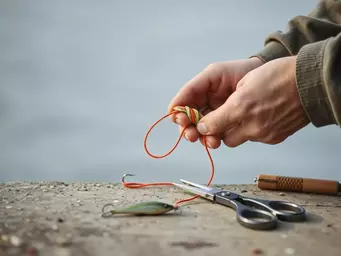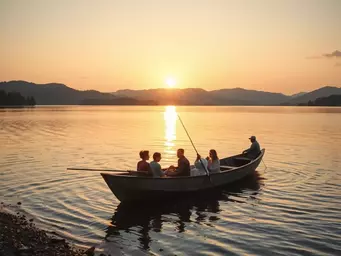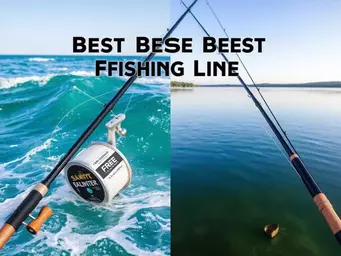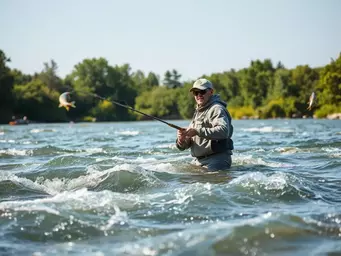Essential Casting Techniques for Anglers
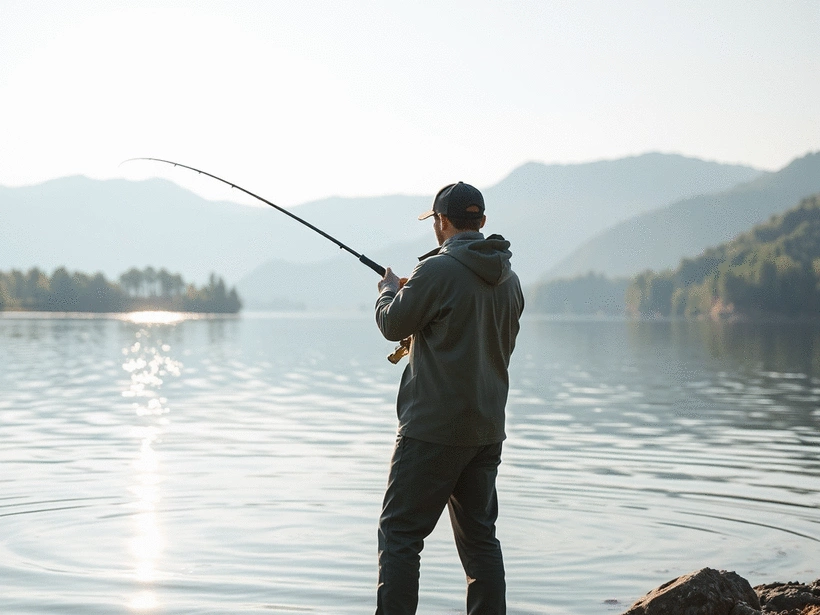
What if I told you that mastering just a few casting techniques could significantly enhance your fishing success? This article dives deep into the essential skills every angler should develop to become a true fishing expert. Let’s reel in some valuable insights!
What You Will Learn
- Effective casting techniques improve accuracy, distance, and adaptability when fishing.
- Understanding different casting styles is crucial for targeting specific types of fish.
- Structured practice methods can enhance your casting skills significantly.
- Recognizing and correcting common mistakes can improve your casting performance.
Enhancing Your Fishing Success: A Guide to Casting Techniques
This visual outlines key areas in mastering casting techniques, focusing on the "Why," "How," and "Practice" to improve your angling skills.
Phase 1Why Casting Techniques Matter
- ✓ Improves accuracy
- ✓ Increases casting distance
- ✓ Enhances adaptability
Foundation for successful angling.
Phase 2How to Approach Learning
- ✓ Research casting styles
- ✓ Practice in varied environments
- ✓ Utilize online resources
Combine traditional and new methods.
Phase 3Effective Practice Methods
- ✓ Use casting targets
- ✓ Record practice sessions
- ✓ Incorporate casting drills
Structured practice for skill refinement.
Phase 4Avoid Common Casting Mistakes
- ✓ Overusing arm strength
- ✓ Poor wrist action
- ✓ Inconsistent stance
Identify and correct errors in real-time.
Understanding the Importance of Casting Techniques in Fishing
As an avid angler, I can't stress enough how crucial casting techniques are to our success on the water. Whether you're a seasoned pro or just starting, mastering these techniques can transform your fishing experience. It’s not just about getting the bait out there; it’s about accuracy, distance, and adaptability in various conditions. So why do casting techniques matter? Let’s explore!
Why Casting Techniques Matter for Every Angler
Every time you cast your line, you're not just throwing a lure into the water—you're setting the stage for the entire fishing trip. The right technique can make a significant difference in attracting fish! By honing your skills, you can become more efficient, save time, and ultimately catch more fish. Plus, casting well builds confidence, making every outing more enjoyable. For a deeper understanding of fundamental angling skills, you can refer to resources like the Kansas 4-H Angling Skills document.
- Improves accuracy when targeting specific spots
- Increases casting distance for covering larger areas
- Enhances adaptability to various fishing environments
As I learned from my own experiences, a good cast can mean the difference between a day filled with memorable catches and one spent searching for fish. Getting those techniques down pat is essential for every angler!
How to Approach Learning Casting Techniques in 2025
With the fishing landscape continuously evolving, approaching casting techniques in 2025 requires a mix of traditional methods and new technologies. Start by familiarizing yourself with various techniques, then choose a few to focus on. This will help you build a solid foundation while also allowing room for growth.
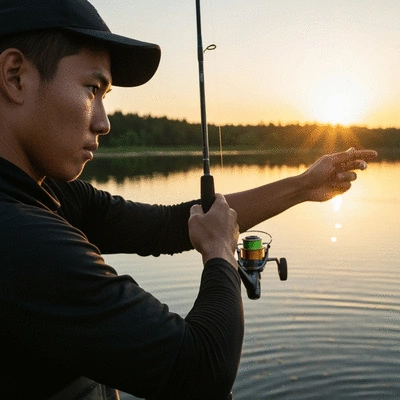
- Research and understand different casting styles
- Practice in varied environments to adapt techniques
- Utilize online resources and community feedback for improvement
Don’t hesitate to connect with fellow anglers. Sharing experiences and tips is invaluable, especially as we embrace new tools and innovations in our fishing journeys!
Exploring Different Casting Techniques for Various Fishing Styles
Fishing isn't one-size-fits-all, and neither are casting techniques. Different styles, whether you're fly fishing, bass fishing, or surf casting, require unique approaches. Understanding these differences is key to maximizing your success out there. It's worth noting that there isn't a single "correct" casting style; rather, various methods are suitable for different situations, as discussed by experts on Orvis News and further elaborated in a technical document by Fly Fishers International.
- Fly casting: Focus on delicate presentations for wary fish
- Bass fishing: Use powerful, accurate casts to hit specific targets
- Surf casting: Adapt to the conditions for longer distances
Finding the right technique for your fishing style can be a game changer. I remember the first time I used a specific cast for bass fishing—it felt like unlocking a new level in the game! Let’s dive deeper into these essential casting techniques in the next section.
Pro Tip
To truly elevate your casting skills, incorporate a variety of drills into your practice routine. For instance, try practicing your casting with different types of lures and in various weather conditions. This not only enhances your adaptability but also prepares you for real-life fishing scenarios where conditions can change rapidly.
Turning Skill into Practice: Mastering Your Casting Techniques
As anglers, we know that the journey to mastering our casting techniques is as crucial as the thrill of the catch itself. Practice is key to refining our skills and elevating our fishing game. But how do you turn theoretical knowledge into practical ability? Let's explore some effective methods to enhance your casting skills!
Effective Practice Methods to Enhance Your Skills
One of the best ways to improve your casting technique is through structured practice. Start by setting specific goals for each session, such as focusing on distance, accuracy, or the execution of a particular technique. Here are some methods to consider:
- Utilize a casting target to measure accuracy and precision.
- Practice in different environments—try an open field, a pond, or a river.
- Focus on one technique at a time to avoid overwhelming yourself.
- Record your practice sessions to analyze and improve your form.
These methods can help you track your progress and make necessary adjustments. Remember, the key is to be consistent and patient with yourself as you work through the challenges!
Visual Learning: Integrating Videos and Interactive Tools
In today's digital age, there's a treasure trove of resources available to help you master casting techniques! Utilizing videos and interactive tools can significantly enhance your learning experience. Here's how you can incorporate them into your practice:
- Watch instructional videos from seasoned anglers to understand the nuances of each technique.
- Engage with interactive apps that simulate casting scenarios and offer feedback.
- Join online communities to share experiences and learn from fellow anglers.
By leveraging visual and interactive tools, you can fast-track your learning and keep your practice sessions engaging. Have you found any specific resources that have helped you improve? I’d love to hear about them!
Incorporating Casting Drills into Your Practice Routine
Creating a routine is essential for developing your casting skills. Incorporating specific casting drills can help reinforce muscle memory and build confidence. Here are some drills to consider:
- The *Target Drill*: Set up targets at various distances and angles to improve accuracy.
- The *One-Handed Cast*: Practice casting with one hand to build strength and control.
- The *Timed Cast*: Challenge yourself to complete a certain number of casts in a limited time.
These drills not only make your practice more purposeful but also help you adapt to different fishing scenarios. Remember, every cast is an opportunity to learn and grow!
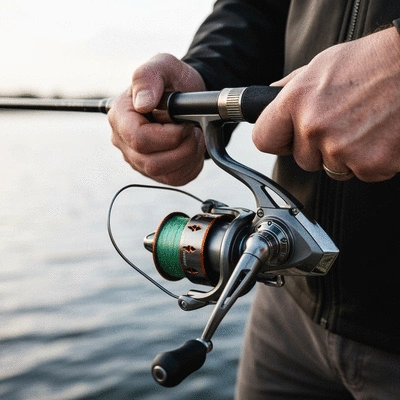
Common Casting Mistakes and How to Avoid Them
Even the most experienced anglers face challenges with casting from time to time. But identifying mistakes early can make a significant difference in your performance. Let's dive into some common errors and how you can navigate them!
Identifying Common Errors in Each Technique
Recognizing where you might be going wrong is the first step to improvement. Here are some frequent mistakes many of us make:
- Overusing arm strength instead of utilizing your whole body.
- Poor wrist action leading to inaccurate casts.
- Inconsistent stance and posture affecting your balance.
By being aware of these errors, you can take steps to correct them and enhance your overall technique.
Strategies for Correcting Mistakes in Real-Time
When you're out on the water, it's crucial to have strategies for correcting mistakes on the fly. Here are some tips to help you stay composed:
- Pause and reassess your stance if your casts are falling short.
- Mentally walk through the steps of your technique when you feel off.
- Use a buddy system—get feedback from fellow anglers as you cast.
Implementing these strategies can help you regain confidence and improve your performance during a fishing trip.
Understanding Casting Form and Its Impact on Performance
Your casting form plays a crucial role in your success as an angler. Maintaining proper form can lead to better accuracy and distance. Here are some components of effective casting form to keep in mind:
- Align your body with the target—this helps in directing your energy where it needs to go.
- Keep your elbow at the right angle to avoid strain and ensure fluid motion.
- Focus on a smooth, controlled release rather than a sudden jerk.
By refining your casting form, you'll notice improvements in both your accuracy and distance. It's all about finding that perfect balance!
Frequently Asked Questions About Casting Techniques
- Q: Why are good casting techniques important in fishing?
- A: Good casting techniques significantly improve accuracy, increase casting distance, and enhance your adaptability to various fishing environments, ultimately leading to more successful and enjoyable fishing trips.
- Q: How can I improve my casting accuracy?
- A: To improve accuracy, use casting targets during practice, focus on consistent stance and body alignment, and ensure smooth, controlled releases. Avoiding common mistakes like poor wrist action also helps.
- Q: What are some effective practice methods for casting?
- A: Effective practice methods include using casting targets, practicing in varied environments, focusing on one technique at a time, recording your sessions for analysis, and incorporating specific casting drills like the Target Drill or Timed Cast.
- Q: How do different fishing styles influence casting techniques?
- A: Different fishing styles require unique approaches. For example, fly casting emphasizes delicate presentations, bass fishing demands powerful and accurate casts for specific targets, and surf casting focuses on achieving longer distances in challenging conditions.
- Q: What are common casting mistakes to avoid?
- A: Common mistakes include overusing arm strength instead of your whole body, poor wrist action leading to inaccuracies, and an inconsistent stance that affects balance. Identifying and correcting these in real-time is crucial for improvement.
Conclusion: Embracing the Journey of Casting Mastery
As we wrap up this section, remember that the journey to casting mastery is ongoing. Each practice session brings new insights and experiences, enriching our connection to fishing. So let’s embrace this adventure together!
The Value of Consistent Practice and Adaptation
Consistent practice is the backbone of skill development. The more you cast, the more you learn about your techniques and how to adapt to the conditions you encounter. Don't shy away from experimenting with different methods to discover what works best for you!
Encouragement to Experiment and Learn from Every Cast
Every cast is an opportunity to grow as an angler. Embrace mistakes and learn from them; they are just stepping stones on your journey. As you continue to refine your technique, remember to share your experiences with the Addict Fishing community, as we’re all here to support each other in our love for fishing!
Recap of Key Points
Here is a quick recap of the important points discussed in the article:
- Mastering casting techniques is crucial for success in fishing, enhancing accuracy and adaptability.
- Approach learning with a mix of traditional and modern methods, focusing on specific techniques.
- Practice in varied environments and incorporate structured drills to improve skills.
- Utilize visual resources and online communities for continuous learning and support.
- Recognize common casting mistakes and apply strategies to correct them in real-time.
